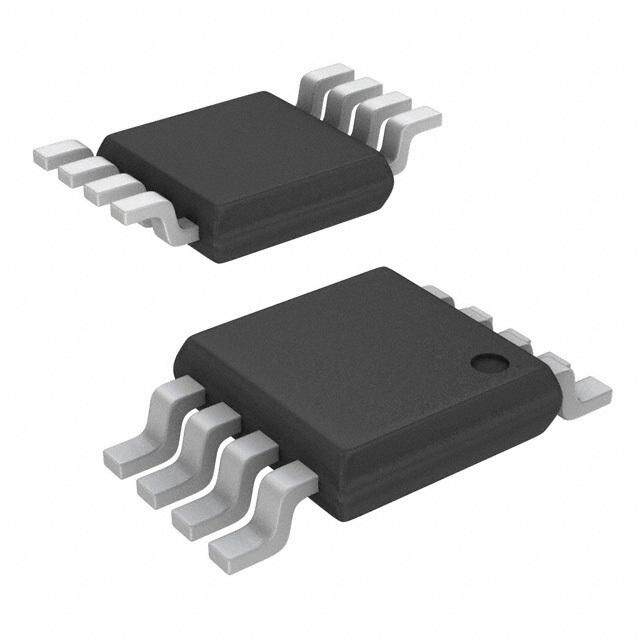ICGOO在线商城 > 集成电路(IC) > 线性 - 音頻放大器 > LM4671ITL/NOPB
- 型号: LM4671ITL/NOPB
- 制造商: Texas Instruments
- 库位|库存: xxxx|xxxx
- 要求:
| 数量阶梯 | 香港交货 | 国内含税 |
| +xxxx | $xxxx | ¥xxxx |
查看当月历史价格
查看今年历史价格
LM4671ITL/NOPB产品简介:
ICGOO电子元器件商城为您提供LM4671ITL/NOPB由Texas Instruments设计生产,在icgoo商城现货销售,并且可以通过原厂、代理商等渠道进行代购。 LM4671ITL/NOPB价格参考¥3.85-¥9.54。Texas InstrumentsLM4671ITL/NOPB封装/规格:线性 - 音頻放大器, Amplifier IC 1-Channel (Mono) Class D 9-DSBGA。您可以下载LM4671ITL/NOPB参考资料、Datasheet数据手册功能说明书,资料中有LM4671ITL/NOPB 详细功能的应用电路图电压和使用方法及教程。
| 参数 | 数值 |
| 产品目录 | 集成电路 (IC)半导体 |
| 描述 | IC AMP AUDIO PWR 2.5W MONO 9BGA音频放大器 Filterless Hi Eff 2.5W Swtch Audio Amp |
| 产品分类 | |
| 品牌 | Texas Instruments |
| 产品手册 | http://www.ti.com/lit/gpn/lm4671 |
| 产品图片 |
|
| rohs | 符合RoHS无铅 / 符合限制有害物质指令(RoHS)规范要求 |
| 产品系列 | 音频 IC,音频放大器,Texas Instruments LM4671ITL/NOPBBoomer® |
| 数据手册 | |
| 产品型号 | LM4671ITL/NOPB |
| PCN组件/产地 | |
| THD+噪声 | 0.09 % |
| 不同负载时的最大输出功率x通道数 | 2.5W x 1 @ 4 欧姆 |
| 产品 | Audio Amplifiers |
| 产品种类 | 音频放大器 |
| 供应商器件封装 | 9-DSBGA |
| 共模抑制比—最小值 | 68.3 dB |
| 其它名称 | 296-35179-6 |
| 包装 | Digi-Reel® |
| 商标 | Texas Instruments |
| 安装类型 | 表面贴装 |
| 安装风格 | SMD/SMT |
| 封装 | Reel |
| 封装/外壳 | 9-WFBGA |
| 封装/箱体 | DSBGA-9 |
| 工作温度 | -40°C ~ 85°C (TA) |
| 工作电源电压 | 5 V |
| 工厂包装数量 | 250 |
| 最大工作温度 | + 85 C |
| 最小工作温度 | - 40 C |
| 标准包装 | 1 |
| 特性 | 消除爆音,差分输入,PWM,关机 |
| 电压-电源 | 2.4 V ~ 5.5 V |
| 电源电压-最大 | 5.5 V |
| 电源电压-最小 | 2.4 V |
| 电源电流 | 6.4 mA |
| 电源类型 | Single |
| 类型 | D 类 |
| 系列 | LM4671 |
| 输入信号类型 | Differential |
| 输出信号类型 | Differential |
| 输出功率 | 2.5 W |
| 输出类型 | 1-通道(单声道) |
| 配用 | /product-detail/zh/LM4671ITLBD/LM4671ITLBD-ND/1640699 |
| 音频负载电阻 | 8 Ohms |

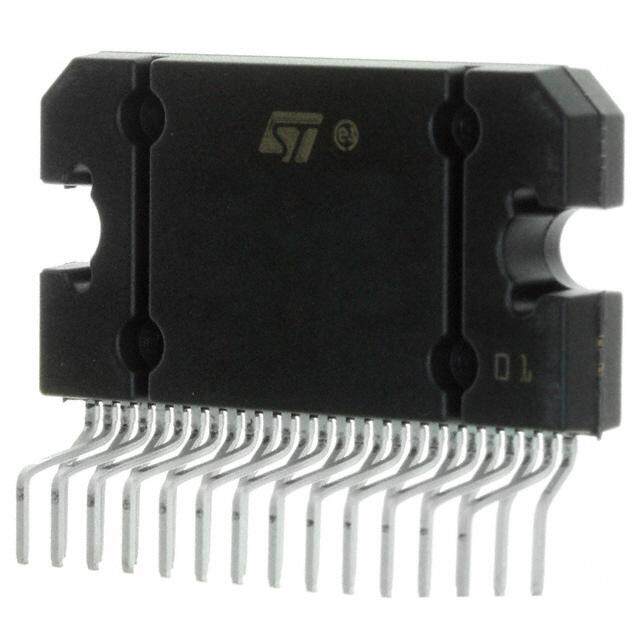


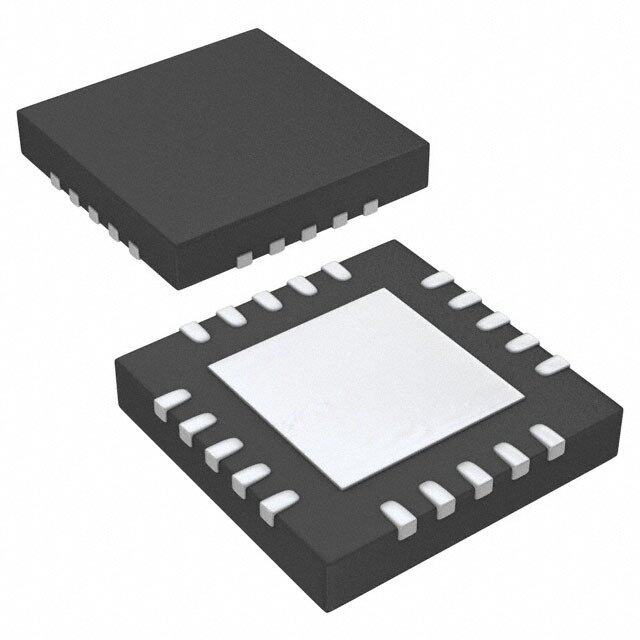


- 商务部:美国ITC正式对集成电路等产品启动337调查
- 曝三星4nm工艺存在良率问题 高通将骁龙8 Gen1或转产台积电
- 太阳诱电将投资9.5亿元在常州建新厂生产MLCC 预计2023年完工
- 英特尔发布欧洲新工厂建设计划 深化IDM 2.0 战略
- 台积电先进制程称霸业界 有大客户加持明年业绩稳了
- 达到5530亿美元!SIA预计今年全球半导体销售额将创下新高
- 英特尔拟将自动驾驶子公司Mobileye上市 估值或超500亿美元
- 三星加码芯片和SET,合并消费电子和移动部门,撤换高东真等 CEO
- 三星电子宣布重大人事变动 还合并消费电子和移动部门
- 海关总署:前11个月进口集成电路产品价值2.52万亿元 增长14.8%
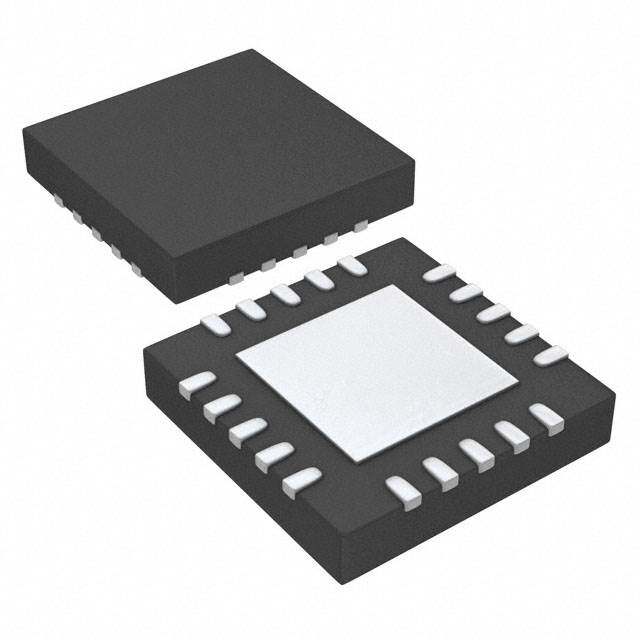
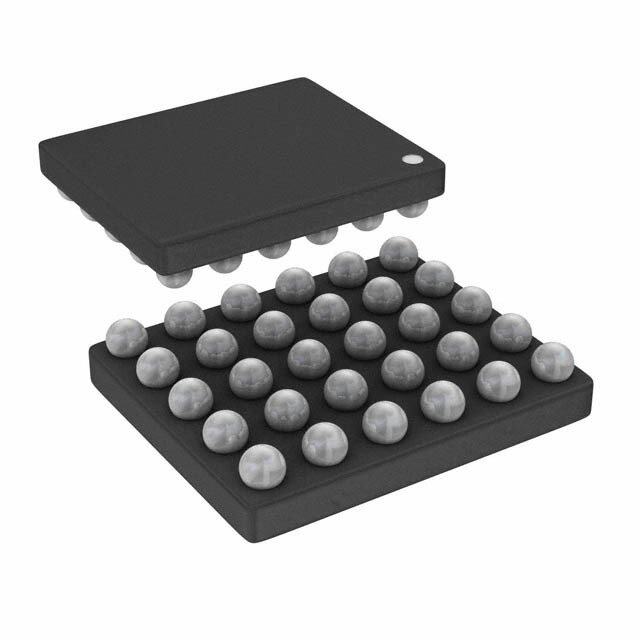
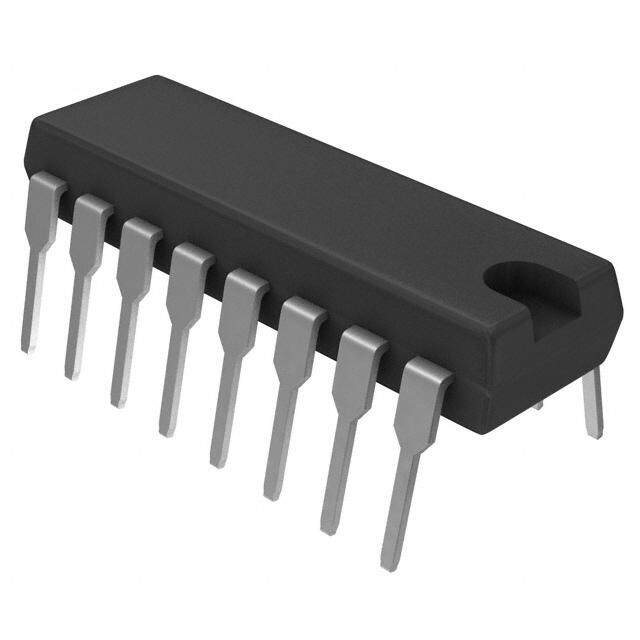

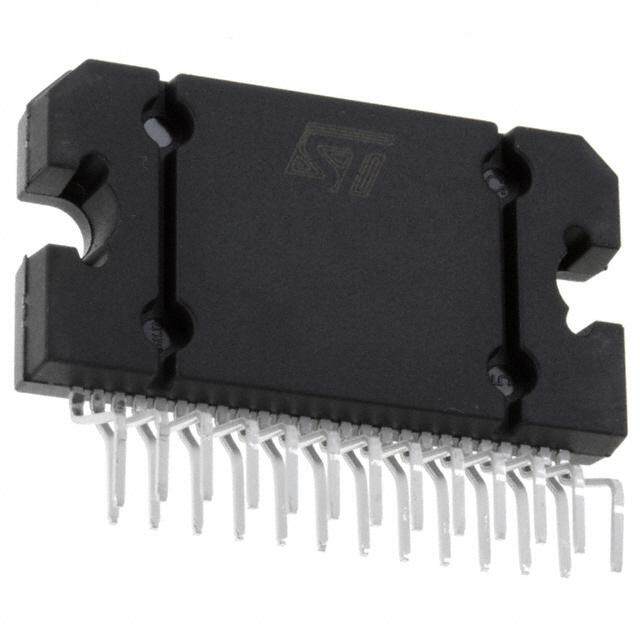
PDF Datasheet 数据手册内容提取
LM4671 www.ti.com SNAS258D–MARCH2005–REVISEDMAY2013 LM4671 Filterless High Efficiency 2.5W Switching Audio Amplifier CheckforSamples:LM4671 FEATURES DESCRIPTION 1 • NoOutputFilterRequiredforInductiveLoads The LM4671 is a single supply, high efficiency 2.5W 2 switching audio amplifier. A low noise, filterless PWM • ExternallyConfigurableGain architecture eliminates the output filter, reducing • VeryFastTurnOnTime:17μs(typ) external component count, board area consumption, • MinimumExternalComponents systemcost,andsimplifyingdesign. • "Clickandpop"SuppressionCircuitry The LM4671 is designed to meet the demands of • Micro-PowerShutdownMode mobile phones and other portable communication devices. Operating on a single 5V supply, it is • AvailableinSpace-SavingDSBGAPackage capable of driving a 4Ω speaker load at a continuous average output of 2.1W with less than 1% THD+N. Its APPLICATIONS flexible power supply requirements allow operation • MobilePhones from2.4Vto5.5V. • PDAs The LM4671 has high efficiency with speaker loads compared to a typical Class AB amplifier. With a 3V • PortableElectronicDevices supply driving an 8Ω speaker, the IC's efficiency for a 100mW power level is 80%, reaching 88% at 400mW KEY SPECIFICATIONS outputpower. • Efficiency@3.6V,100mWinto8Ω Speaker: The LM4671 features a low-power consumption 80%(typ) shutdown mode. Shutdown may be enabled by • Efficiency@3.6V,400mWinto8Ω Speaker: drivingtheShutdownpintoalogiclow(GND). 88%(typ) The gain of the LM4671 is externally configurable • Efficiency@5V,1Winto8Ω Speaker:86% which allows independent gain control from multiple (typ) sourcesbysummingthesignals. • QuiescentCurrent,3.6VSupply:2.8mA(typ) • TotalShutdownPowerSupplyCurrent:0.01 µA(typ) • SingleSupplyRange:2.4to5.5V Typical Application Figure1. TypicalAudioAmplifierApplicationCircuit 1 Pleasebeawarethatanimportantnoticeconcerningavailability,standardwarranty,anduseincriticalapplicationsof TexasInstrumentssemiconductorproductsanddisclaimerstheretoappearsattheendofthisdatasheet. Alltrademarksarethepropertyoftheirrespectiveowners. 2 PRODUCTIONDATAinformationiscurrentasofpublicationdate. Copyright©2005–2013,TexasInstrumentsIncorporated Products conform to specifications per the terms of the Texas Instruments standard warranty. Production processing does not necessarilyincludetestingofallparameters.
LM4671 SNAS258D–MARCH2005–REVISEDMAY2013 www.ti.com Connection Diagram GND IN+ A Vo1 VDD B PGND IN- C Vo2 1 2 3 SHUTDOWN PVDD Figure2. 9BumpDSBGAPackageTopView SeePackageNumberYZR0009AAA Thesedeviceshavelimitedbuilt-inESDprotection.Theleadsshouldbeshortedtogetherorthedeviceplacedinconductivefoam duringstorageorhandlingtopreventelectrostaticdamagetotheMOSgates. 2 SubmitDocumentationFeedback Copyright©2005–2013,TexasInstrumentsIncorporated ProductFolderLinks:LM4671
LM4671 www.ti.com SNAS258D–MARCH2005–REVISEDMAY2013 Absolute Maximum Ratings(1)(2)(3) SupplyVoltage(1) 6.0V StorageTemperature −65°Cto+150°C VoltageatAnyInputPin V +0.3V≥V≥GND-0.3V DD PowerDissipation(4) InternallyLimited ESDSusceptibility,allotherpins(5) 2.0kV ESDSusceptibility(6) 200V JunctionTemperature(T ) 150°C JMAX ThermalResistance θ (DSBGA) 220°C/W JA SolderingInformation SeeAN-1112"MicroSMDWafersLevelChipScalePackage"(LiteratureNumberSNVA009) (1) Allvoltagesaremeasuredwithrespecttothegroundpin,unlessotherwisespecified. (2) AbsoluteMaximumRatingsindicatelimitsbeyondwhichdamagetothedevicemayoccur.OperatingRatingsindicateconditionsfor whichthedeviceisfunctional,butdonotensurespecificperformancelimits.ElectricalCharacteristicsstateDCandACelectrical specificationsunderparticulartestconditionswhichensurespecificperformancelimits.Thisassumesthatthedeviceiswithinthe OperatingRatings.Specificationsarenotspecifiedforparameterswherenolimitisgiven,however,thetypicalvalueisagoodindication ofdeviceperformance. (3) IfMilitary/Aerospacespecifieddevicesarerequired,pleasecontacttheTexasInstrumentsSalesOffice/Distributorsforavailabilityand specifications. (4) ThemaximumpowerdissipationmustbederatedatelevatedtemperaturesandisdictatedbyT ,θ ,andtheambienttemperature JMAX JA T .ThemaximumallowablepowerdissipationisP =(T –T )/θ orthenumbergiveninAbsoluteMaximumRatings,whichever A DMAX JMAX A JA islower.FortheLM4671,T =150°C.Thetypicalθ is220°C/WfortheDSBGApackage. JMAX JA (5) Humanbodymodel,100pFdischargedthrougha1.5kΩresistor. (6) MachineModel,220pF–240pFdischargedthroughallpins. Operating Ratings(1)(2) TemperatureRange T ≤T ≤T −40°C≤T ≤85°C MIN A MAX A SupplyVoltage 2.4V≤V ≤5.5V DD (1) Allvoltagesaremeasuredwithrespecttothegroundpin,unlessotherwisespecified. (2) AbsoluteMaximumRatingsindicatelimitsbeyondwhichdamagetothedevicemayoccur.OperatingRatingsindicateconditionsfor whichthedeviceisfunctional,butdonotensurespecificperformancelimits.ElectricalCharacteristicsstateDCandACelectrical specificationsunderparticulartestconditionswhichensurespecificperformancelimits.Thisassumesthatthedeviceiswithinthe OperatingRatings.Specificationsarenotspecifiedforparameterswherenolimitisgiven,however,thetypicalvalueisagoodindication ofdeviceperformance. Electrical Characteristics(1)(2) ThefollowingspecificationsapplyforA =2V/V(R =150kΩ),R =15µH+8Ω+15µHunlessotherwisespecified.Limits V I L applyforT =25°C. A LM4671 Units Symbol Parameter Conditions Typical(3) Limit(4) (5) (Limits) V =0V,A =2V/V, |V | DifferentialOutputOffsetVoltage I V 5 mV(max) OS V =2.4Vto5.0V DD PSRR GSMPowerSupplyRejectionRatio V =2.4Vto5.0V 61 dB(min) GSM DD V =2.4Vto5.0V DD CMRR GSMCommonModeRejectionRatio V =V /2to0.5V, 68 dB(min) GSM IC DD V =V /2toV –0.8V IC DD DD |I | LogicHighInputCurrent V =5.0V,V =5.5V 17 100 μA(max) IH DD I |I | LogicLowInputCurrent V =5.0V,V =–0.3V 0.9 5 μA(max) IL DD I (1) Allvoltagesaremeasuredwithrespecttothegroundpin,unlessotherwisespecified. (2) AbsoluteMaximumRatingsindicatelimitsbeyondwhichdamagetothedevicemayoccur.OperatingRatingsindicateconditionsfor whichthedeviceisfunctional,butdonotensurespecificperformancelimits.ElectricalCharacteristicsstateDCandACelectrical specificationsunderparticulartestconditionswhichensurespecificperformancelimits.Thisassumesthatthedeviceiswithinthe OperatingRatings.Specificationsarenotspecifiedforparameterswherenolimitisgiven,however,thetypicalvalueisagoodindication ofdeviceperformance. (3) Typicalspecificationsarespecifiedat25°Candrepresenttheparametricnorm. (4) TestedlimitsarespecifiedtoAOQL(AverageOutgoingQualityLevel). (5) Datasheetmin/maxspecificationlimitsarespecifiedbydesign,test,orstatisticalanalysis. Copyright©2005–2013,TexasInstrumentsIncorporated SubmitDocumentationFeedback 3 ProductFolderLinks:LM4671
LM4671 SNAS258D–MARCH2005–REVISEDMAY2013 www.ti.com Electrical Characteristics(1)(2) (continued) ThefollowingspecificationsapplyforA =2V/V(R =150kΩ),R =15µH+8Ω+15µHunlessotherwisespecified.Limits V I L applyforT =25°C. A LM4671 Units Symbol Parameter Conditions Typical(3) Limit(4) (5) (Limits) V =0V,NoLoad,V =5.0V 6.4 mA(max) IN DD I QuiescentPowerSupplyCurrent V =0V,NoLoad,V =3.6V 3.8 6.2 mA DD IN DD V =0V,NoLoad,V =2.4V 2.0 3.0 mA(max) IN DD V =0V I ShutdownCurrent SHUTDOWN 0.01 1 μA(max) SD V =2.4Vto5.0V DD V Shutdownvoltageinputhigh 1.2 1.4 V(min) SDIH V Shutdownvoltageinputlow 1.1 0.4 V(max) SDIL R OutputImpedance V =0.4V 100 kΩ OSD SHUTDOWN 270kΩ/R V/V(min) A Gain 300kΩ/R I V I 330kΩ/R V/V(max) I ResistancefromShutdownPinto R 300 kΩ SD GND R =15μH+4Ω+15μH L THD=10%(max) f=1kHz,22kHzBW V =5V 2.5 W DD V =3.6V 1.3 W DD V =2.5V 520 mW DD P OutputPower O R =15μH+4Ω+15μH L THD=1%(max) f=1kHz,22kHzBW V =5V 2.21 W DD V =3.6V 1.06 W DD V =2.5V 420 mW DD R =15μH+8Ω+15μH L THD=10%(max) f=1kHz,22kHzBW V =5V 1.7 W DD V =3.6V 870 mW DD V =2.5V 425 mW DD P OutputPower O R =15μH+8Ω+15μH L THD=1%(max) f=1kHz,22kHzBW V =5V 1.19 W DD V =3.6V 700 600 mW DD V =2.5V 350 mW DD V =5V,P =0.1W , DD O RMS 0.09 % f=1kHz V =3.6V,P =0.1W , DD O RMS 0.04 % f=1kHz THD+N TotalHarmonicDistortion+Noise V =3.6V,P =0.1W , DD O RMS 0.12 % f=5kHz V =3.6V,P =0.1W , DD O RMS 0.05 % f=10kHz 4 SubmitDocumentationFeedback Copyright©2005–2013,TexasInstrumentsIncorporated ProductFolderLinks:LM4671
LM4671 www.ti.com SNAS258D–MARCH2005–REVISEDMAY2013 Electrical Characteristics(1)(2) (continued) ThefollowingspecificationsapplyforA =2V/V(R =150kΩ),R =15µH+8Ω+15µHunlessotherwisespecified.Limits V I L applyforT =25°C. A LM4671 Units Symbol Parameter Conditions Typical(3) Limit(4) (5) (Limits) V =3.6V,5V DD V =200mV Sine, Ripple PP 61.8 dB f =217Hz Ripple InputstoACGND,C =2μF I V =3.6V,5V DD V =200mV Sine, Ripple PP 59.8 dB f =1kHz Ripple InputstoACGND,C =2μF I PSRR PowerSupplyRejectionRatio V =3.6V,5V DD V =200mV Sine, Ripple PP 48.7 dB f =10kHz Ripple InputstoACGND,C =2μF I V =3.6V,5V DD V =200mV Sine, Ripple PP 65.7 dB f =217Hz Ripple f =1kHz,P =10mW IN O RMS SNR SignaltoNoiseRatio V =5V,P =1W 93 dB DD O RMS V =3.6V,f=20Hz–20kHz DD InputstoACGND,C =2μF 58 μV I RMS ε OutputNoise NoWeighting OUT V =3.6V,InputstoACGND DD 38 μV C =2μF,AWeighted RMS I V =3.6V,V =1V Sine CMRR CommonModeRejectionRatio DD Ripple PP 68.3 dB f =217Hz Ripple T Wake-upTime V =3.6V 17 49 μs(max) WU DD T ShutdownTime 140 μs SD External Components Description (Figure1) Components FunctionalDescription 1. C Supplybypasscapacitorwhichprovidespowersupplyfiltering.RefertoPOWERSUPPLYBYPASSINGfor S informationconcerningproperplacementandselectionofthesupplybypasscapacitor. 2. C InputACcouplingcapacitorwhichblockstheDCvoltageattheamplifier'sinputterminals. I Copyright©2005–2013,TexasInstrumentsIncorporated SubmitDocumentationFeedback 5 ProductFolderLinks:LM4671
LM4671 SNAS258D–MARCH2005–REVISEDMAY2013 www.ti.com Typical Performance Characteristics THD+NvsFrequency THD+NvsFrequency V =2.4V,R =15μH+4Ω+15μH, V =3.6V,R =15μH+4Ω+15μH, DD L DD L P =375mW,22kHzBW P =750mW,22kHzBW O O Figure3. Figure4. THD+NvsFrequency THD+NvsFrequency V =5V,R =15μH+4Ω+15μH, V =2.4V,R =15μH+8Ω+15μH, DD L DD L P =1.5mW,22kHzBW P =200mW,22kHzBW O O Figure5. Figure6. THD+NvsFrequency THD+NvsFrequency V =3.6V,R =15μH+8Ω+15μH, V =5V,R =15μH+8Ω+15μH, DD L DD L P =500mW,22kHzBW P =1W,22kHzBW O O Figure7. Figure8. 6 SubmitDocumentationFeedback Copyright©2005–2013,TexasInstrumentsIncorporated ProductFolderLinks:LM4671
LM4671 www.ti.com SNAS258D–MARCH2005–REVISEDMAY2013 Typical Performance Characteristics (continued) THD+NvsOutputPower THD+NvsOutputPower V =5V,R =15μH+4Ω+15μH, V =5V,R =15μH+8Ω+15μH, DD L DD L f=1kHz,22kHzBW f=1kHz,22kHzBW Figure9. Figure10. CMRRvsFrequency PSRRvsFrequency V =3.6V,R =15μH+8Ω+15μH, V =3.6V,R =15μH+8Ω+15μH, DD L DD L V =1V ,22kHzBW V =200mV ,22kHzBW ripple p-p ripple p-p Figure11. Figure12. EfficiencyvsOutputPower EfficiencyvsOutputPower R =15μH+4Ω+15μH, R =15μH+8Ω+15μH, L L f=1kHz,22kHzBW f=1kHz,22kHzBW Figure13. Figure14. Copyright©2005–2013,TexasInstrumentsIncorporated SubmitDocumentationFeedback 7 ProductFolderLinks:LM4671
LM4671 SNAS258D–MARCH2005–REVISEDMAY2013 www.ti.com Typical Performance Characteristics (continued) PowerDissipationvsOutputPower PowerDissipationvsOutputPower R =15μH+4Ω+15μH, R =15μH+8Ω+15μH, L L f=1kHz,22kHzBW f=1kHz,22kHzBW Figure15. Figure16. OutputPowervsSupplyVoltage OutputPowervsSupplyVoltage R =15μH+4Ω+15μH, R =15μH+8Ω+15μH, L L V =3.6V V =3.6V DD DD Figure17. Figure18. GainvsSupplyVoltage SupplyCurrentvsSupplyVoltage R =150kΩ R =15μH+8Ω+15μH in L Figure19. Figure20. 8 SubmitDocumentationFeedback Copyright©2005–2013,TexasInstrumentsIncorporated ProductFolderLinks:LM4671
LM4671 www.ti.com SNAS258D–MARCH2005–REVISEDMAY2013 Typical Performance Characteristics (continued) ShutdownCurrentvsSupplyVoltage R =15μH+8Ω+15μH L Figure21. Copyright©2005–2013,TexasInstrumentsIncorporated SubmitDocumentationFeedback 9 ProductFolderLinks:LM4671
LM4671 SNAS258D–MARCH2005–REVISEDMAY2013 www.ti.com APPLICATION INFORMATION GENERAL AMPLIFIER FUNCTION TheLM4671featuresafilterlessmodulationscheme.Thedifferentialoutputsofthedeviceswitchat300kHzfrom V to GND. When there is no input signal applied, the two outputs (V 1 and V 2) switch with a 50% duty cycle, DD O O with both outputs in phase. Because the outputs of the LM4671 are differential, the two signals cancel each other. This results in no net voltage across the speaker, thus there is no load current during an idle state, conservingpower. With an input signal applied, the duty cycle (pulse width) of the LM4671 outputs changes. For increasing output voltages,thedutycycleofV 1increases,whilethedutycycleofV 2decreases.Fordecreasingoutputvoltages, O O the converse occurs, the duty cycle of V 2 increases while the duty cycle of V 1 decreases. The difference O O betweenthetwopulsewidthsyieldsthedifferentialoutputvoltage. POWER DISSIPATION AND EFFICIENCY Ingeneralterms,efficiencyisconsideredtobetheratioofusefulworkoutputdividedbythetotalenergyrequired toproduceitwiththedifferencebeingthepowerdissipated,typically,intheIC.Thekeyhereis“useful” work.For audio systems, the energy delivered in the audible bands is considered useful including the distortion products of the input signal. Sub-sonic (DC) and super-sonic components (>22kHz) are not useful. The difference between the power flowing from the power supply and the audio band power being transduced is dissipated in the LM4671 and in the transducer load. The amount of power dissipation in the LM4671 is very low. This is because the ON resistance of the switches used to form the output waveforms is typically less than 0.25Ω. This leaves only the transducer load as a potential "sink" for the small excess of input power over audio band output power. The LM4671 dissipates only a fraction of the excess power requiring no additional PCB area or copper plane to actasaheatsink. DIFFERENTIAL AMPLIFIER EXPLANATION As logic supply voltages continue to shrink, designers are increasingly turning to differential analog signal handling to preserve signal to noise ratios with restricted voltage swing. The LM4671 is a fully differential amplifierthatfeaturesdifferentialinputandoutputstages.Adifferentialamplifieramplifiesthedifferencebetween the two input signals. Traditional audio power amplifiers have typically offered only single-ended inputs resulting in a 6dB reduction in signal to noise ratio relative to differential inputs. The LM4671 also offers the possibility of DC input coupling which eliminates the two external AC coupling, DC blocking capacitors. The LM4671 can be used, however, as a single ended input amplifier while still retaining its fully differential benefits. In fact, completely unrelated signals may be placed on the input pins. The LM4671 simply amplifies the difference between the signals. A major benefit of a differential amplifier is the improved common mode rejection ratio (CMRR) over single input amplifiers. The common-mode rejection characteristic of the differential amplifier reducessensitivitytogroundoffsetrelatednoiseinjection,especiallyimportantinhighnoiseapplications. PCB LAYOUT CONSIDERATIONS As output power increases, interconnect resistance (PCB traces and wires) between the amplifier, load and power supply create a voltage drop. The voltage loss on the traces between the LM4671 and the load results is lower output power and decreased efficiency. Higher trace resistance between the supply and the LM4671 has the same effect as a poorly regulated supply, increase ripple on the supply line also reducing the peak output power. The effects of residual trace resistance increases as output current increases due to higher output power, decreased load impedance or both. To maintain the highest output voltage swing and corresponding peak output power, the PCB traces that connect the output pins to the load and the supply pins to the power supply should beaswideaspossibletominimizetraceresistance. TheuseofpowerandgroundplaneswillgivethebestTHD+Nperformance.Whilereducingtraceresistance,the useofpowerplanesalsocreatesparasitecapacitorsthathelptofilterthepowersupplyline. 10 SubmitDocumentationFeedback Copyright©2005–2013,TexasInstrumentsIncorporated ProductFolderLinks:LM4671
LM4671 www.ti.com SNAS258D–MARCH2005–REVISEDMAY2013 The inductive nature of the transducer load can also result in overshoot on one or both edges, clamped by the parasitic diodes to GND and V in each case. From an EMI standpoint, this is an aggressive waveform that can DD radiate or conduct to other components in the system and cause interference. It is essential to keep the power and output traces short and well shielded if possible. Use of ground planes, beads, and micro-strip layout techniquesareallusefulinpreventingunwantedinterference. As the distance from the LM4671 and the speaker increase, the amount of EMI radiation will increase since the output wires or traces acting as antenna become more efficient with length. What is acceptable EMI is highly application specific. Ferrite chip inductors placed close to the LM4671 may be needed to reduce EMI radiation. Thevalueoftheferritechipisveryapplicationspecific. POWER SUPPLY BYPASSING As with any power amplifier, proper supply bypassing is critical for low noise performance and high power supply rejection ratio (PSRR). The capacitor (C ) location should be as close as possible to the LM4671. Typical S applications employ a voltage regulator with a 10µF and a 0.1µF bypass capacitors that increase supply stability. These capacitors do not eliminate the need for bypassing on the supply pin of the LM4671. A 1µF tantalum capacitorisrecommended. SHUTDOWN FUNCTION In order to reduce power consumption while not in use, the LM4671 contains shutdown circuitry that reduces current draw to less than 0.01µA. The trigger point for shutdown is shown as a typical value in the Electrical Characteristics Tables and in the Shutdown Hysteresis Voltage graphs found in the Typical Performance Characteristics section. It is best to switch between ground and supply for minimum current usage while in the shutdown state. While the LM4671 may be disabled with shutdown voltages in between ground and supply, the idlecurrentwillbegreaterthanthetypical0.01µAvalue. TheLM4671hasaninternalresistorconnectedbetweenGNDandShutdownpins.Thepurposeofthisresistoris toeliminateanyunwantedstatechangeswhentheShutdownpinisfloating.TheLM4671willentertheshutdown state when the Shutdown pin is left floating or if not floating, when the shutdown voltage has crossed the threshold. To minimize the supply current while in the shutdown state, the Shutdown pin should be driven to GNDorleftfloating.IftheShutdownpinisnotdriventoGND,theamountofadditionalresistorcurrentduetothe internalshutdownresistorcanbefoundbyEquation(1)below. (V -GND)/60kΩ (1) SD Withonlya0.5Vdifference,anadditional8.3µAofcurrentwillbedrawnwhileintheshutdownstate. PROPER SELECTION OF EXTERNAL COMPONENTS The gain of the LM4671 is set by the external resistors, Ri in Figure 1, The Gain is given by Equation (2) below. BestTHD+Nperformanceisachievedwithagainof2V/V(6dB). A =2*150kΩ/R (V/V) (2) V i It is recommended that resistors with 1% tolerance or better be used to set the gain of the LM4671. The Ri resistors should be placed close to the input pins of the LM4671. Keeping the input traces close to each other and of the same length in a high noise environment will aid in noise rejection due to the good CMRR of the LM4671. Noise coupled onto input traces which are physically close to each other will be common mode and easilyrejectedbytheLM4671. Input capacitors may be needed for some applications or when the source is single-ended (see Figures 3 and 5). Input capacitors are needed to block any DC voltage at the source so that the DC voltage seen between the input terminals of the LM4671 is 0V. Input capacitors create a high-pass filter with the input resistors, R. The i –3dBpointofthehigh-passfilterisfoundusingEquation(3)below. f =1/(2πR C )(Hz) (3) C i i Copyright©2005–2013,TexasInstrumentsIncorporated SubmitDocumentationFeedback 11 ProductFolderLinks:LM4671
LM4671 SNAS258D–MARCH2005–REVISEDMAY2013 www.ti.com The input capacitors may also be used to remove low audio frequencies. Small speakers cannot reproduce low bass frequencies so filtering may be desired. When the LM4671 is using a single-ended source, power supply noise on the ground is seen as an input signal by the +IN input pin that is capacitor coupled to ground (see Figures 5 -7). Setting the high-pass filter point above the power supply noise frequencies, 217Hz in a GSM phone, for example, will filter out this noise so it is not amplified and heard on the output. Capacitors with a toleranceof10%orbetterarerecommendedforimpedancematching. DIFFERENTIAL CIRCUIT CONFIGURATIONS The LM4671 can be used in many different circuit configurations. The simplest and best performing is the DC coupled, differential input configuration shown in Figure 22. Equation (2) above is used to determine the value of theR resistorsforadesiredgain. i Input capacitors can be used in a differential configuration as shown in Figure 23. Equation (3) above is used to determine the value of the C capacitors for a desired frequency response due to the high-pass filter created by i C andR.Equation(2)aboveisusedtodeterminethevalueoftheR resistorsforadesiredgain i i i The LM4671 can be used to amplify more than one audio source. Figure 24 shows a dual differential input configuration. The gain for each input can be independently set for maximum design flexibility using the R i resistors for each input and Equation (2). Input capacitors can be used with one or more sources as well to have differentfrequencyresponsesdependingonthesourceorifaDCvoltageneedstobeblockedfromasource. SINGLE-ENDED CIRCUIT CONFIGURATIONS The LM4671 can also be used with single-ended sources but input capacitors will be needed to block any DC at the input terminals. Figure 25 shows the typical single-ended application configuration. The equations for Gain, Equation (2), and frequency response, Equation (3), hold for the single-ended configuration as shown in Figure25. When using more than one single-ended source as shown in Figure 26, the impedance seen from each input terminal should be equal. To find the correct values for C and R connected to the +IN input pin the equivalent i3 i3 impedanceofallthesingle-endedsourcesarecalculated.Thesingle-endedsourcesareinparalleltoeachother. The equivalent capacitor and resistor, C and R , are found by calculating the parallel combination of all i3 i3 CvaluesandthenallR values.Equations(4)and(5)belowareforanynumberofsingle-endedsources. i i C =C +C +C ...(μF) (4) i3 i1 i2 in R =1/(1/R +1/R +1/R ...)(Ω) (5) i3 i1 i2 in The LM4671 may also use a combination of single-ended and differential sources. A typical application with one single-ended source and one differential source is shown in Figure 27. Using the principle of superposition, the externalcomponentvaluescanbedeterminedwiththeaboveequationscorrespondingtotheconfiguration. 12 SubmitDocumentationFeedback Copyright©2005–2013,TexasInstrumentsIncorporated ProductFolderLinks:LM4671
LM4671 www.ti.com SNAS258D–MARCH2005–REVISEDMAY2013 Figure22. Differentialinputconfiguration Figure23. Differentialinputconfigurationwithinputcapacitors Figure24. Dualdifferentialinputconfiguration Copyright©2005–2013,TexasInstrumentsIncorporated SubmitDocumentationFeedback 13 ProductFolderLinks:LM4671
LM4671 SNAS258D–MARCH2005–REVISEDMAY2013 www.ti.com Figure25. Single-endedinputconfiguration Figure26. Dualsingle-endedinputconfiguration 14 SubmitDocumentationFeedback Copyright©2005–2013,TexasInstrumentsIncorporated ProductFolderLinks:LM4671
LM4671 www.ti.com SNAS258D–MARCH2005–REVISEDMAY2013 Figure27. Dualinputwithasingle-endedinputandadifferentialinput REFERENCE DESIGN BOARD SCHEMATIC Figure28. ReferenceDesignBoardSchematic In addition to the minimal parts required for the application circuit, a measurement filter is provided on the evaluation circuit board so that conventional audio measurements can be conveniently made without additional equipment. This is a balanced input, grounded differential output low pass filter with a 3dB frequency of approximately 35kHz and an on board termination resistor of 300Ω (see Figure 28). Note that the capacitive load elements are returned to ground. This is not optimal for common mode rejection purposes, but due to the independent pulse format at each output there is a significant amount of high frequency common mode component on the outputs. The grounded capacitive filter elements attenuate this component at the board to reducethehighfrequencyCMRRrequirementplacedontheanalysisinstruments. Even with the grounded filter the audio signal is still differential, necessitating a differential input on any analysis instrument connected to it. Most lab instruments that feature BNC connectors on their inputs are NOT differential respondingbecausetheringoftheBNCisusuallygrounded. Copyright©2005–2013,TexasInstrumentsIncorporated SubmitDocumentationFeedback 15 ProductFolderLinks:LM4671
LM4671 SNAS258D–MARCH2005–REVISEDMAY2013 www.ti.com The commonly used Audio Precision analyzer is differential, but its ability to accurately reject high frequency signals is questionable necessitating the on board measurement filter. When in doubt or when the signal needs to be single-ended, use an audio signal transformer to convert the differential output to a single ended output. Depending on the audio transformer's characteristics, there may be some attenuation of the audio signal which needstobetakenintoaccountforcorrectmeasurementofperformance. Measurements made at the output of the measurement filter suffer attenuation relative to the primary, unfiltered outputs even at audio frequencies. This is due to the resistance of the inductors interacting with the termination resistor (300Ω) and is typically about -0.25dB (3%). In other words, the voltage levels (and corresponding power levels) indicated through the measurement filter are slightly lower than those that actually occur at the load placed on the unfiltered outputs. This small loss in the filter for measurement gives a lower output power reading thanwhatisreallyoccurringontheunfilteredoutputsanditsload. LM4671 DSBGA BOARD ARTWORK Figure29. CompositeView Figure30. SilkScreen Figure31. TopLayer 16 SubmitDocumentationFeedback Copyright©2005–2013,TexasInstrumentsIncorporated ProductFolderLinks:LM4671
LM4671 www.ti.com SNAS258D–MARCH2005–REVISEDMAY2013 Figure32. InternalLayer1,GND Figure33. InternalLayer2,GND Figure34. BottomLayer Revision History Rev Date Description 1.0 03/16/05 Initialrelease. 1.01 12/17/07 Sometextedits. 1.02 03/03/08 EditedtheSHUTDOWNFUNCTIONsection(underApplicationInformation). D 05/02/13 ChangedlayoutofNationalDataSheettoTIformat Copyright©2005–2013,TexasInstrumentsIncorporated SubmitDocumentationFeedback 17 ProductFolderLinks:LM4671
PACKAGE OPTION ADDENDUM www.ti.com 2-May-2013 PACKAGING INFORMATION Orderable Device Status Package Type Package Pins Package Eco Plan Lead/Ball Finish MSL Peak Temp Op Temp (°C) Top-Side Markings Samples (1) Drawing Qty (2) (3) (4) LM4671ITL/NOPB ACTIVE DSBGA YZR 9 250 Green (RoHS SNAGCU Level-1-260C-UNLIM -40 to 85 G & no Sb/Br) E7 LM4671ITLX/NOPB ACTIVE DSBGA YZR 9 3000 Green (RoHS SNAGCU Level-1-260C-UNLIM -40 to 85 G & no Sb/Br) E7 (1) The marketing status values are defined as follows: ACTIVE: Product device recommended for new designs. LIFEBUY: TI has announced that the device will be discontinued, and a lifetime-buy period is in effect. NRND: Not recommended for new designs. Device is in production to support existing customers, but TI does not recommend using this part in a new design. PREVIEW: Device has been announced but is not in production. Samples may or may not be available. OBSOLETE: TI has discontinued the production of the device. (2) Eco Plan - The planned eco-friendly classification: Pb-Free (RoHS), Pb-Free (RoHS Exempt), or Green (RoHS & no Sb/Br) - please check http://www.ti.com/productcontent for the latest availability information and additional product content details. TBD: The Pb-Free/Green conversion plan has not been defined. Pb-Free (RoHS): TI's terms "Lead-Free" or "Pb-Free" mean semiconductor products that are compatible with the current RoHS requirements for all 6 substances, including the requirement that lead not exceed 0.1% by weight in homogeneous materials. Where designed to be soldered at high temperatures, TI Pb-Free products are suitable for use in specified lead-free processes. Pb-Free (RoHS Exempt): This component has a RoHS exemption for either 1) lead-based flip-chip solder bumps used between the die and package, or 2) lead-based die adhesive used between the die and leadframe. The component is otherwise considered Pb-Free (RoHS compatible) as defined above. Green (RoHS & no Sb/Br): TI defines "Green" to mean Pb-Free (RoHS compatible), and free of Bromine (Br) and Antimony (Sb) based flame retardants (Br or Sb do not exceed 0.1% by weight in homogeneous material) (3) MSL, Peak Temp. -- The Moisture Sensitivity Level rating according to the JEDEC industry standard classifications, and peak solder temperature. (4) Multiple Top-Side Markings will be inside parentheses. Only one Top-Side Marking contained in parentheses and separated by a "~" will appear on a device. If a line is indented then it is a continuation of the previous line and the two combined represent the entire Top-Side Marking for that device. Important Information and Disclaimer:The information provided on this page represents TI's knowledge and belief as of the date that it is provided. TI bases its knowledge and belief on information provided by third parties, and makes no representation or warranty as to the accuracy of such information. Efforts are underway to better integrate information from third parties. TI has taken and continues to take reasonable steps to provide representative and accurate information but may not have conducted destructive testing or chemical analysis on incoming materials and chemicals. TI and TI suppliers consider certain information to be proprietary, and thus CAS numbers and other limited information may not be available for release. In no event shall TI's liability arising out of such information exceed the total purchase price of the TI part(s) at issue in this document sold by TI to Customer on an annual basis. Addendum-Page 1
PACKAGE MATERIALS INFORMATION www.ti.com 8-May-2013 TAPE AND REEL INFORMATION *Alldimensionsarenominal Device Package Package Pins SPQ Reel Reel A0 B0 K0 P1 W Pin1 Type Drawing Diameter Width (mm) (mm) (mm) (mm) (mm) Quadrant (mm) W1(mm) LM4671ITL/NOPB DSBGA YZR 9 250 178.0 8.4 1.7 1.7 0.76 4.0 8.0 Q1 LM4671ITLX/NOPB DSBGA YZR 9 3000 178.0 8.4 1.7 1.7 0.76 4.0 8.0 Q1 PackMaterials-Page1
PACKAGE MATERIALS INFORMATION www.ti.com 8-May-2013 *Alldimensionsarenominal Device PackageType PackageDrawing Pins SPQ Length(mm) Width(mm) Height(mm) LM4671ITL/NOPB DSBGA YZR 9 250 210.0 185.0 35.0 LM4671ITLX/NOPB DSBGA YZR 9 3000 210.0 185.0 35.0 PackMaterials-Page2
MECHANICAL DATA YZR0009xxx D 0.600±0.075 E TLA09XXX (Rev C) D: Max = 1.542 mm, Min =1 .481 mm E: Max = 1.542 mm, Min =1 .481 mm 4215046/A 12/12 NOTES: A.Alllineardimensionsareinmillimeters.DimensioningandtolerancingperASMEY14.5M-1994. B.Thisdrawingissubjecttochangewithoutnotice. www.ti.com
IMPORTANTNOTICE TexasInstrumentsIncorporated(TI)reservestherighttomakecorrections,enhancements,improvementsandotherchangestoits semiconductorproductsandservicesperJESD46,latestissue,andtodiscontinueanyproductorserviceperJESD48,latestissue.Buyers shouldobtainthelatestrelevantinformationbeforeplacingordersandshouldverifythatsuchinformationiscurrentandcomplete. TI’spublishedtermsofsaleforsemiconductorproducts(http://www.ti.com/sc/docs/stdterms.htm)applytothesaleofpackagedintegrated circuitproductsthatTIhasqualifiedandreleasedtomarket.AdditionaltermsmayapplytotheuseorsaleofothertypesofTIproductsand services. ReproductionofsignificantportionsofTIinformationinTIdatasheetsispermissibleonlyifreproductioniswithoutalterationandis accompaniedbyallassociatedwarranties,conditions,limitations,andnotices.TIisnotresponsibleorliableforsuchreproduced documentation.Informationofthirdpartiesmaybesubjecttoadditionalrestrictions.ResaleofTIproductsorserviceswithstatements differentfromorbeyondtheparametersstatedbyTIforthatproductorservicevoidsallexpressandanyimpliedwarrantiesforthe associatedTIproductorserviceandisanunfairanddeceptivebusinesspractice.TIisnotresponsibleorliableforanysuchstatements. BuyersandotherswhoaredevelopingsystemsthatincorporateTIproducts(collectively,“Designers”)understandandagreethatDesigners remainresponsibleforusingtheirindependentanalysis,evaluationandjudgmentindesigningtheirapplicationsandthatDesignershave fullandexclusiveresponsibilitytoassurethesafetyofDesigners'applicationsandcomplianceoftheirapplications(andofallTIproducts usedinorforDesigners’applications)withallapplicableregulations,lawsandotherapplicablerequirements.Designerrepresentsthat,with respecttotheirapplications,Designerhasallthenecessaryexpertisetocreateandimplementsafeguardsthat(1)anticipatedangerous consequencesoffailures,(2)monitorfailuresandtheirconsequences,and(3)lessenthelikelihoodoffailuresthatmightcauseharmand takeappropriateactions.DesigneragreesthatpriortousingordistributinganyapplicationsthatincludeTIproducts,Designerwill thoroughlytestsuchapplicationsandthefunctionalityofsuchTIproductsasusedinsuchapplications. TI’sprovisionoftechnical,applicationorotherdesignadvice,qualitycharacterization,reliabilitydataorotherservicesorinformation, including,butnotlimitedto,referencedesignsandmaterialsrelatingtoevaluationmodules,(collectively,“TIResources”)areintendedto assistdesignerswhoaredevelopingapplicationsthatincorporateTIproducts;bydownloading,accessingorusingTIResourcesinany way,Designer(individuallyor,ifDesignerisactingonbehalfofacompany,Designer’scompany)agreestouseanyparticularTIResource solelyforthispurposeandsubjecttothetermsofthisNotice. TI’sprovisionofTIResourcesdoesnotexpandorotherwisealterTI’sapplicablepublishedwarrantiesorwarrantydisclaimersforTI products,andnoadditionalobligationsorliabilitiesarisefromTIprovidingsuchTIResources.TIreservestherighttomakecorrections, enhancements,improvementsandotherchangestoitsTIResources.TIhasnotconductedanytestingotherthanthatspecifically describedinthepublisheddocumentationforaparticularTIResource. Designerisauthorizedtouse,copyandmodifyanyindividualTIResourceonlyinconnectionwiththedevelopmentofapplicationsthat includetheTIproduct(s)identifiedinsuchTIResource.NOOTHERLICENSE,EXPRESSORIMPLIED,BYESTOPPELOROTHERWISE TOANYOTHERTIINTELLECTUALPROPERTYRIGHT,ANDNOLICENSETOANYTECHNOLOGYORINTELLECTUALPROPERTY RIGHTOFTIORANYTHIRDPARTYISGRANTEDHEREIN,includingbutnotlimitedtoanypatentright,copyright,maskworkright,or otherintellectualpropertyrightrelatingtoanycombination,machine,orprocessinwhichTIproductsorservicesareused.Information regardingorreferencingthird-partyproductsorservicesdoesnotconstitutealicensetousesuchproductsorservices,orawarrantyor endorsementthereof.UseofTIResourcesmayrequirealicensefromathirdpartyunderthepatentsorotherintellectualpropertyofthe thirdparty,oralicensefromTIunderthepatentsorotherintellectualpropertyofTI. TIRESOURCESAREPROVIDED“ASIS”ANDWITHALLFAULTS.TIDISCLAIMSALLOTHERWARRANTIESOR REPRESENTATIONS,EXPRESSORIMPLIED,REGARDINGRESOURCESORUSETHEREOF,INCLUDINGBUTNOTLIMITEDTO ACCURACYORCOMPLETENESS,TITLE,ANYEPIDEMICFAILUREWARRANTYANDANYIMPLIEDWARRANTIESOF MERCHANTABILITY,FITNESSFORAPARTICULARPURPOSE,ANDNON-INFRINGEMENTOFANYTHIRDPARTYINTELLECTUAL PROPERTYRIGHTS.TISHALLNOTBELIABLEFORANDSHALLNOTDEFENDORINDEMNIFYDESIGNERAGAINSTANYCLAIM, INCLUDINGBUTNOTLIMITEDTOANYINFRINGEMENTCLAIMTHATRELATESTOORISBASEDONANYCOMBINATIONOF PRODUCTSEVENIFDESCRIBEDINTIRESOURCESOROTHERWISE.INNOEVENTSHALLTIBELIABLEFORANYACTUAL, DIRECT,SPECIAL,COLLATERAL,INDIRECT,PUNITIVE,INCIDENTAL,CONSEQUENTIALOREXEMPLARYDAMAGESIN CONNECTIONWITHORARISINGOUTOFTIRESOURCESORUSETHEREOF,ANDREGARDLESSOFWHETHERTIHASBEEN ADVISEDOFTHEPOSSIBILITYOFSUCHDAMAGES. UnlessTIhasexplicitlydesignatedanindividualproductasmeetingtherequirementsofaparticularindustrystandard(e.g.,ISO/TS16949 andISO26262),TIisnotresponsibleforanyfailuretomeetsuchindustrystandardrequirements. WhereTIspecificallypromotesproductsasfacilitatingfunctionalsafetyorascompliantwithindustryfunctionalsafetystandards,such productsareintendedtohelpenablecustomerstodesignandcreatetheirownapplicationsthatmeetapplicablefunctionalsafetystandards andrequirements.Usingproductsinanapplicationdoesnotbyitselfestablishanysafetyfeaturesintheapplication.Designersmust ensurecompliancewithsafety-relatedrequirementsandstandardsapplicabletotheirapplications.DesignermaynotuseanyTIproductsin life-criticalmedicalequipmentunlessauthorizedofficersofthepartieshaveexecutedaspecialcontractspecificallygoverningsuchuse. Life-criticalmedicalequipmentismedicalequipmentwherefailureofsuchequipmentwouldcauseseriousbodilyinjuryordeath(e.g.,life support,pacemakers,defibrillators,heartpumps,neurostimulators,andimplantables).Suchequipmentincludes,withoutlimitation,all medicaldevicesidentifiedbytheU.S.FoodandDrugAdministrationasClassIIIdevicesandequivalentclassificationsoutsidetheU.S. TImayexpresslydesignatecertainproductsascompletingaparticularqualification(e.g.,Q100,MilitaryGrade,orEnhancedProduct). Designersagreethatithasthenecessaryexpertisetoselecttheproductwiththeappropriatequalificationdesignationfortheirapplications andthatproperproductselectionisatDesigners’ownrisk.Designersaresolelyresponsibleforcompliancewithalllegalandregulatory requirementsinconnectionwithsuchselection. DesignerwillfullyindemnifyTIanditsrepresentativesagainstanydamages,costs,losses,and/orliabilitiesarisingoutofDesigner’snon- compliancewiththetermsandprovisionsofthisNotice. MailingAddress:TexasInstruments,PostOfficeBox655303,Dallas,Texas75265 Copyright©2017,TexasInstrumentsIncorporated

 Datasheet下载
Datasheet下载




